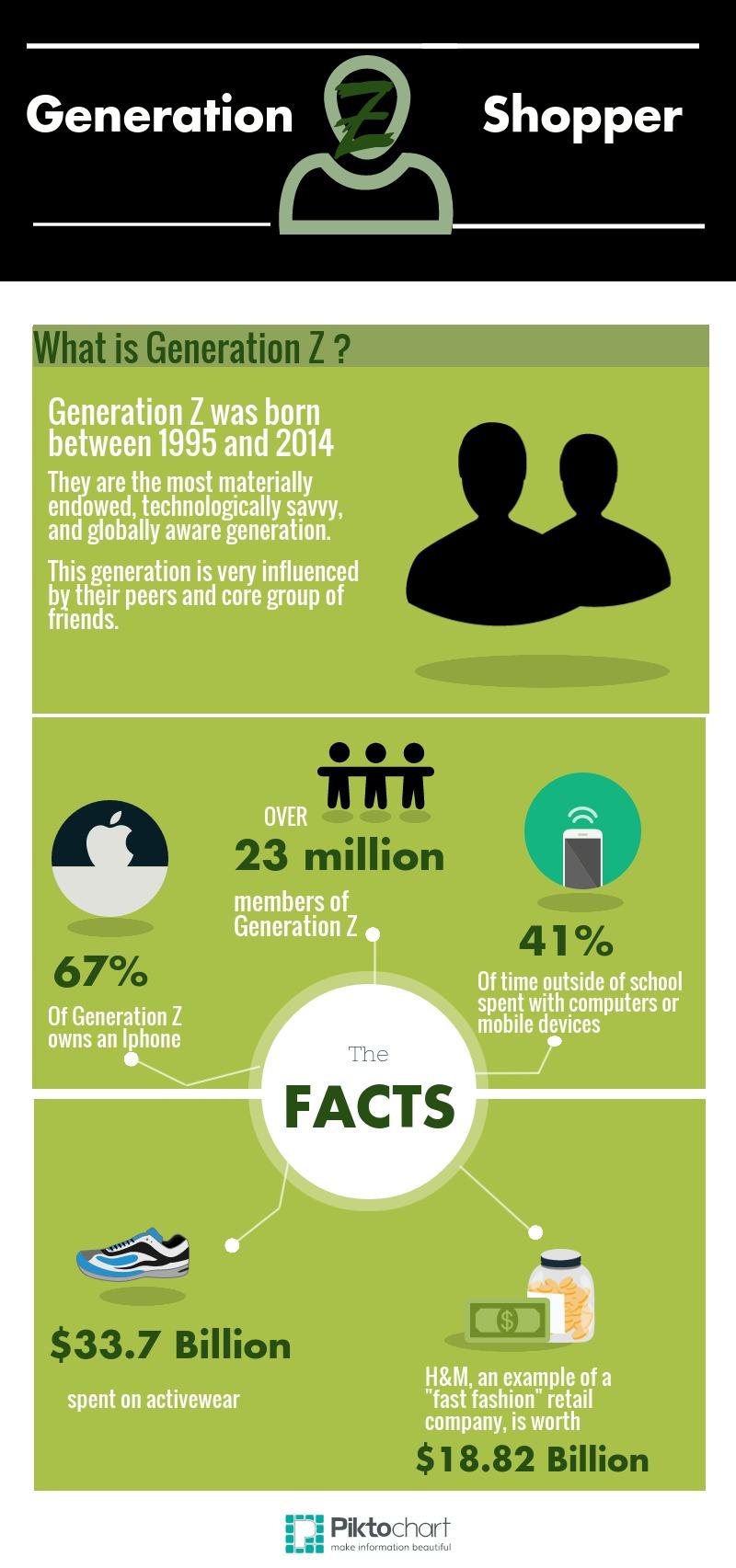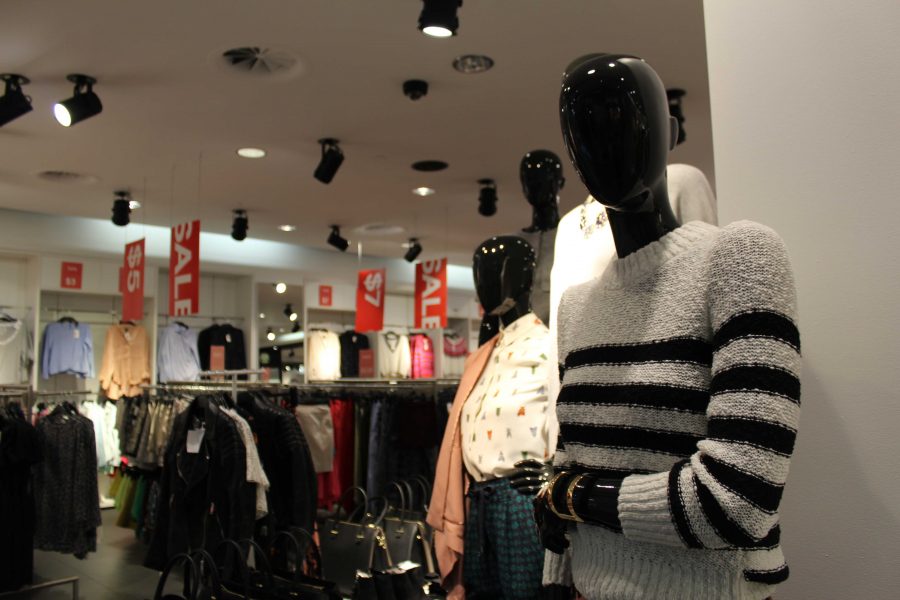
Generation Z (born between 1995 and 2012), with over 23 million members, is rapidly changing the trends in marketing, fashion, business, and technology.
Coming after Generation Y, Generation Z is characterized as confident, independent and aspirational.
Generation Z also cares about social injustice and a need to be constantly connected to the world via social media.
Many marketers are struggling to cope with Generation Z’s shopping needs, which are very different from past trends.
According to the Richmond Times Dispatch, Abercrombie and Fitch, Aeropostale, and American Eagle are losing many shoppers from Generation Z.
Abercrombie and Fitch reported an 11.5 percent quarterly sales drop in December 2014, which sliced its annual profit forecast.

A week after this, the company’s longtime Chief Executive Officer (CEO) Mike Jeffries retired, and Abercrombie has hired an executive search firm to find a new CEO.
Earlier in the year, Jeffries had made many controversial statements, such as, “A lot of people don’t belong [in our clothes], and they can’t belong. Are we exclusionary? Absolutely.”
American Eagle and Aeropostale also posted dismal forecasts for the quarter.
These companies had become popular in the past because of their trendy jeans and logo tees, but Generation Z is not interested.
Generation Z does not want to be exactly like everyone else or represent companies with clothing, but be their own people and express themselves through their clothing and purchases.
Teens rush to “fast-fashion” retailers
Generation Z is interested in “fast-fashion”, affordable clothes that are the result of catwalk designs moving into stores in the fastest way possible to respond to the latest trends.
According to an article by National Public Radio (NPR), Generation Z customers are now drifting towards “fast-fashion” clothing stores, such as Forever 21, H&M, and Zara.
These companies are “constantly turning over their merchandise, introducing ever-trendier clothing, and feeding their customers’ desire for novelty.”
Since these chains are so inexpensive, consumers are now buying clothes in quantities, which is providing a huge profit for these companies.
These companies hire workers in countries such as China and Bangladesh and pay them low wages to provide inexpensive clothing.
Finances Online reported that H&M is the second richest clothing company in the United States-worth $18.82 billion- surpassing Coach, Estee-Lauder, and Christian Dior.
The success of “fast fashion” has changed the way the retail world works, and has affected the industry as a whole.

“Athleisure” becomes the new fad
Generation Z has also created the fashion trend of “athleisure” clothing- activewear that’s not worn for workouts.
According to the NPD group’s report, activewear made up 16 percent of all apparel purchases from 2013 to 2014, totalling at $33.7 billion.
Generation Z has a desire for being in trendy clothing that’s also comfortable and multifunctional.
Yoga pants and leggings have become a huge trend among teenage girls and women, as they are very comfy and stylish.
Jean sales dropped 6 percent in the past year, putting brands such as Levi’s in a tough spot.
Meanwhile, Lululemon’s- a yoga and sportswear company- sales revenue incrementally increased from $452.9 million in 2010 to $1.59 billion in 2014.
The Huffington Post stated that the increase in the popularity of athleisure clothing is partly due to the expectation of women’s bodies.
“In the 1990s, a super-thin, waif-like body was idealized; now the focus seems to be on thin and toned bodies,” it states.
To keep up with the athleisure trend, clothing stores have added new sportswear lines.
Designer Alexander Wang came out with an athletic line for H&M last fall, Topshop is going to debut a Beyonce activewear line in 2015, and Kate Hudson has co-founded the Fabletics athletic wear company.
Online shopping websites such as Carbon 38 and Net-A-Porter have also started to sell trendy athletic wear.
High-end brands such as Gucci and Christian Dior have added sneaker lines to their collections.
Abercrombie, Aeropostale, and American Eagle are furiously trying to catch up with the new athleisure trend.
They are removing logo wear and adding stylish outfits as well as athletic wear. They are also trying to get products in their stores faster to compete with “fast-fashion” retailers.
Abercrombie will also be permanently cutting its prices by 15 percent to try to keep up with the inexpensive clothing being sold.
Technology changes marketing
The technology that Generation Z possesses has also massively changed the way they shop.
Clothing stores used to stock their shelves with new clothes at the end of every two seasons, but with new technology “fast-fashion” stores can bring in new clothes every month.
Retail stores are also losing money because Generation Z teens are starting to spend more time at home on their technology instead of making trips to the mall, where stores are located.
The Business Insider says that Generation Z members multitask across at least five screens daily and spend 41 percent of their time outside of school with computers or mobile devices.
Generation Z teens are also establishing bonds through apps, while staying at home.
Social media apps such as Twitter, Instagram, and Facebook already keep friends connected but now, new apps on the markets have risen which connect people with strangers for advice and more.
This need for technology is why clothing companies have implemented online shopping websites for themselves.
Starbucks has an online store and has created an app for itself, where users can make mobile purchases, view Starbucks stores near them, earn rewards, send gift cards, and more.
According to an article on Forbes, 11 percent of the sales volume of Starbucks now comes through its own mobile wallet.
This means “four million mobile payments per week” and that “eight million consumers are using mobile apps to pay.”
Taking Stock With Teens outlines new changes
Piper Jaffray’s Taking Stock With Teens is a semi-annual research project that receives input from approximately 7,200 teens with an average age of 16.
The company visited 11 states and 14 schools, and issued an online survey which included 41 states.
Taking Stock With Teens – Fall 2014 concludes that “a key fashion trend among teens is the spirit of choice-demand for action sports, fast fashion, refined classics and athletic brands stabilized or increased.”
It also states that “teen closets are diverse, just like their social circles and lifestyles. The millennial thirst for adventure is clear with experimentation, discovery, and individuality being the new cool.”
The report says that Abercrombie, Aeropostale, and American Eagle, and Hollister are “significantly below peak mindshare and current capacity.”
Teens are starting to spend more money on food and electronics at the expense of fashion, the report states.
The report outlines that while the majority of teens still shop for clothes in-store, they are increasingly shopping online and via mobile.
A key food trend among Generation Z teens is the increased consumption of organic food, the report states.
This statement is supported by the drop of sales in Coca-Cola.
Now, to cope with Generation Z’s healthy desires, Coca Cola has released an all new “Coca-Cola Life” drink.
Coca-Cola life is a sparkling beverage sweetened by cane sugar and stevia leaf extract and has 35 percent fewer calories than other leading colas.
An article on Businessweek claims, “Cultural shifts don’t happen overnight. They build slowly—a sip of coconut water here, a quinoa purchase there, and suddenly the American diet looks drastically different than it did 10 years ago.”
An increase in spending on technology has also occurred with Generation Z teens, the Taking Stock With Teens reports.
The percentage of teens asking for a GoPro as a gift quadrupled year by year, it states.
Apple remains the top consumer electronics brand for Generation Z teens. Sixty-seven percent own Iphones, up 6 percent from spring 2014, and 73 percent expect their next phone to be an Iphone.
In addition, report states that friends and the internet dominate Generation Z teen influences, which combine in social media.
Instagram and Twitter are the most popular social media sites for Generation Z teens.
The report concludes that “This generation of teens are creating their own ‘stories’ through purchases, experiences and activities in order to cultivate their personal brands, primarily in domains like socials media and friend networks.”
Background Photo Credit: Carrie Coonan/The Foothill Dragon Press









